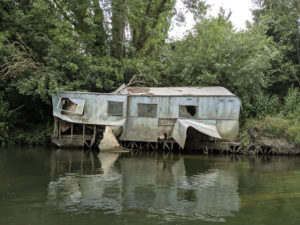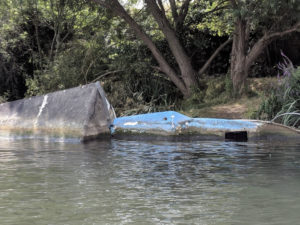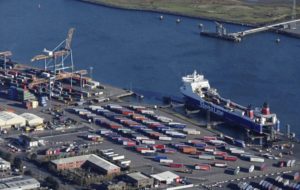End-of-Life boat disposal is not purely an owner problem says ICOMIA

The International Council of Marine Industry Associations (ICOMIA) has issued a policy statement regarding end-of-life vessels and responsible boat ownership. It’s calling for a new approach to EoL challenges, and points out that ‘disposal is not purely an owner problem’.
“There is a need for a collaborative approach involving stakeholders across governments, industry and the public to develop a strategic approach to the management of the issue of end-of-life boats,” the policy states.
Citing an EU Study on Nautical Tourism that indicates that up to 1-2% of over six million boats below 24 meters length (approximately 80,000) are reaching end of life each year, the statement says only around 2,000 of those are dismantled for the purpose of recycling. Much of the problem with EoL boats stems from the lack of awareness and, to some extent, infrastructure to be able to apply sustainable disposal options for composite plastics, which make up a large proportion of the waste.
Currently, the majority of boats in need of disposal are landfilled (legally or illegally), sunk, or abandoned in ports, marinas, private premises and yards. For the authorities or stakeholders tasked with this job, the costs associated with disposing of abandoned boats is higher than it would likely have been for boat owners to take the boat to an appropriate disposal or recycling facility if such facilities were readily available.

Riverside wreck building on Thames
“It’s good to see that ICOMIA have once again highlighted the issues around end of life boat disposal,” says Luke Edney, Communications Manager for Boatbreakers, who previously wrote for MIN about the shameful state of the UK policy. “With more people in the marine industry talking it can only help to solve the issues we face day to day. It is also encouraging to see they see ‘collaboration’ and ‘disposal not only an owner problem’ as two of their key points.
“We had some discussions with the head of ICOMIA just before lockdown about keeping the issue on the agenda heading into METSTRADE 2020. Boatbreakers just hope that any developments in Europe can also be implemented closer to home. In the meantime, while the issue is discussed, we will continue to provide realistic disposal solutions for boat owners across the UK.”
In Europe there are commercially available solutions for recycling composite waste, and in certain countries the marine industry is working with these schemes. As an industry body, ICOMIA wishes to increase cooperation with other composite-using industries (for example wind turbines) and their representative bodies such as the European Composite Industry Association (EuCIA), in order to maximise the volume potential for remanufacturing.
ICOMIA says it is increasingly interested in:
- Swift removal of EoL boats. Abandoned boats have the potential to damage the industry. Removing products at the bottom of the market will ensure demand for new boats.
- There is increase client demand for products that better perform environmentally, the circular economy and boat recycling is key to this.
- There is a lack of appropriate information available to industry, boat owners and prospective owners to support a sustainable lifecycle regarding vessels. Despite this, progress is being made in composite recycling/remanufacturing and alternative materials. Boat DIGEST developed an online training course for staff working at waste management facilities and having to treat boats, as well as creating a regularly updated dismantling network map which helps identify and locate professional dismantling sites in Europe. This project also raised awareness for boat owners as well as dismantlers.

Sunken boat in the Thames
But the question remains about what practical actions this can, and will, turn into in the immediate future as images like the ones used (courtesy of Ali Ball) are all too common in UK waterways.










